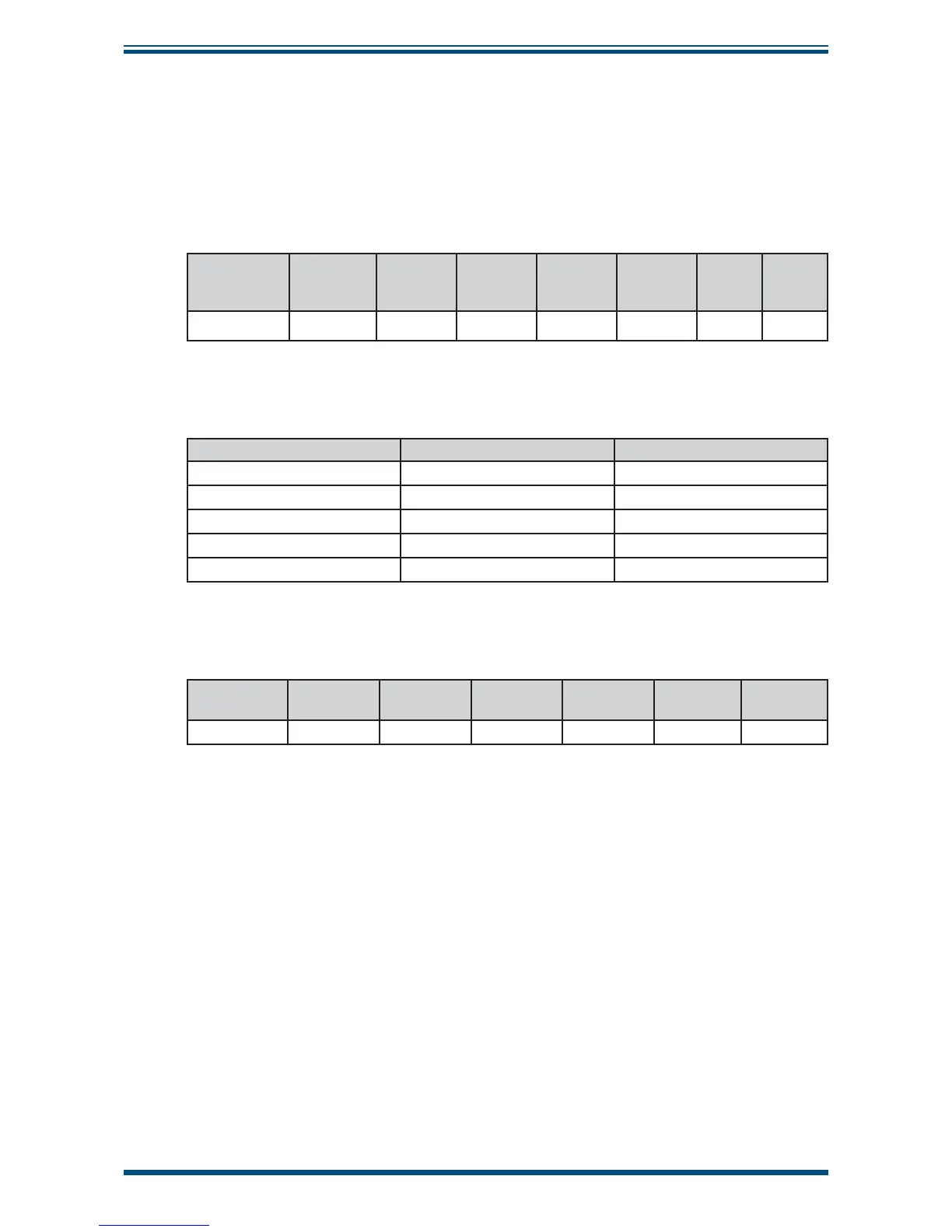Easidew Online User’s Manual
Michell Instruments 39
OPERATION
3.6 Monitor – Reading the Displayed Value Using Modbus RTU Over RS232
It is possible to communicate with the online monitor using Modbus RTU over RS232.
The monitor has a three pin serial port connection on the back – the required cable can
be supplied by Michell (see Appendix B for set-up information).
To read the value displayed on the monitor a byte array must be created, containing
the following bytes:
Instrument
Address
Command
Reg
Address
High
Reg
Address
Low
Number
of Reg
High
Number
of Reg
Low
LRC CRC
0x01 0x04 0x00 0x00 0x00 0x01 0x31 0xCA
Send this to the instrument with the correct delays between characters:
Baud Rate (bps) Min Delay (ms) Max Delay (ms)
1200 9.17 13.76
2400 4.59 6.88
4800 2.30 3.44
9600 1.15 1.72
19200 0.57 0.86
After a few seconds the instrument will send back the following response:
Instrument
Address
Command
Number of
bytes
Display
High
Display
Low
LRC CRC
0x01 0x03 0x02 0x00 0x67 (Varies) (Varies)
Data MSB * 256 + Data LSB = 0 *256 + 103 = 103
This code, written in c, can be used to convert the 103 into a real dew-point value or
10.3:
fl oat ConvertToReal(int Value) //convert dew-point value to real dew-point result
{fl oat result; //declaration
if (Value > 32767) Value=(Value-65536); //convert to negative number
result = (fl oat)(Value/10.0); //divide number by 10 to convert to fl oat
return result; //return real value}

